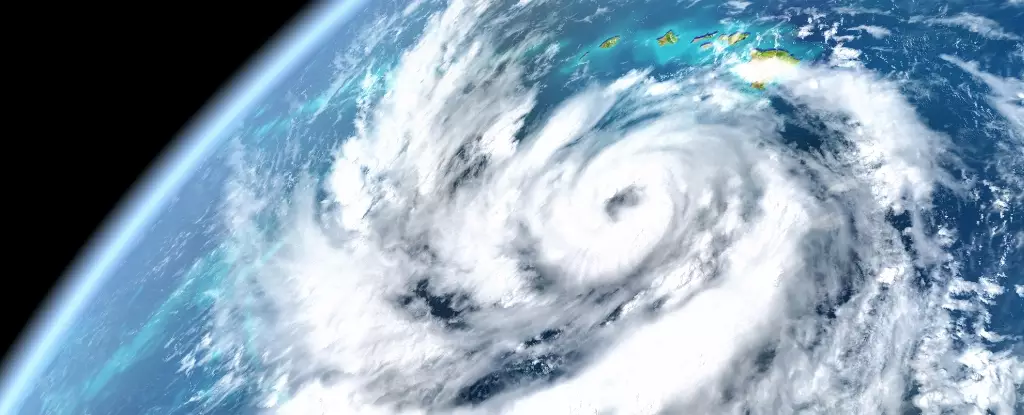Microsoft’s new artificial intelligence model, Aurora, is stirring up discussions and debate within meteorological circles and beyond. Touted as a breakthrough in forecasting technique, Aurora reportedly eclipses established forecasting methods used by conventional meteorological organizations. With its capacity to produce 10-day weather forecasts and accurately predict hurricane trajectories at a fraction of the cost and time typically associated with traditional methods, Aurora represents a fundamental shift in the ways we grapple with chaotic environmental phenomena.
The results, documented in the esteemed journal Nature, suggest the AI’s performance surpasses operational centers like the US National Hurricane Center, leading one to wonder whether this marks an overdue shake-up in an industry long dominated by outdated practices. However, the hype surrounding Aurora also warrants scrutiny—are we witnessing a revolution in meteorology, or are we simply grasping at straws in the face of climate threats?
Comparative Superiority: A Double-Edged Sword
At first glance, the claims surrounding Aurora are nothing short of groundbreaking. It’s reportedly the first AI to reliably outperform multiple forecasting centers in predicting destructive cyclone paths. Senior researcher Paris Perdikaris stated that Aurora accurately predicted the trajectory of Typhoon Doksuri days in advance, highlighting that traditional forecasts had it veering off course. But while these achievements may seem laudable, one must ask what these improvements really mean for global forecasting practices.
Considering the human costs of natural disasters exacerbated by climate change, any technology that enhances predictive capabilities is undeniably valuable. Yet, the questions cascade. Can we fully trust a model that makes its calculations solely on historical data? What happens when faced with unprecedented weather patterns that cannot be predicted based on past occurrences? Lack of comprehensive understanding could inadvertently lead to overreliance on a system still steeped in experimental ambiguity.
The Challenge of Integration
The rampant acceleration of AI technologies in the forecasting domain raises essential challenges regarding integration. It’s vital to look into whether meteorological organizations can seamlessly incorporate this advanced AI system into their existing frameworks. While Aurora’s computational demands are astronomically lower than traditional models, weather agencies worldwide are racing against time to develop their AI systems while balancing this innovation with their established forecasting practices.
Moreover, European agencies like the ECMWF are already developing their learning models, arguing that their first attempts have proved significantly more efficient—in terms of cost and energy usage—than earlier physical models. Yet, there’s a palpable tension here. Are these agency-led AI efforts mere responses to the impending competition, or genuinely attempts to harness the best of both worlds—a blend of traditional models and innovative technology?
The Broader Implications of AI in Climate Science
While any advancement in weather forecasting is welcome, the overarching implications of integrating AI into climate sciences send ripples of concern through the community. The confidence with which these AI models are being touted could backfire if they fail to deliver in real-world applications. Public perception stands crucial here; a society that already finds itself wrestling with climate anxiety may become more vulnerable if overhyped AI sticks can’t cope with extreme weather events.
Moreover, as human lives hang in the balance, accuracy in predictions takes on newfound meaning. If meteorological agencies lean too heavily on AI, what happens when technical glitches occur, or when AI misfires during critical events? The balance of human expertise and machine learning must be delicately managed; overconfidence in AI like Aurora could lead to devastating consequences.
The Race for the Future
The race to harness AI for better weather forecasting appears inevitable and essential. However, it underscores the need for a nuanced approach that balances the audacity of innovation with a grounded awareness of the limitations inherent in any technological advancement. As we stand at the intersection of AI and climate science, we cannot afford to lose sight of the human experiences tied to weather phenomena.
By fostering partnerships among traditional meteorological services, developers of AI technologies, and communities confronting the brunt of climate change, we may yet achieve a more resilient forecasting paradigm. While Aurora may indeed herald the dawn of a new era, the implications of integrating AI into climate science must continue to be thoughtfully examined as we navigate this brave new world.

Leave a Reply